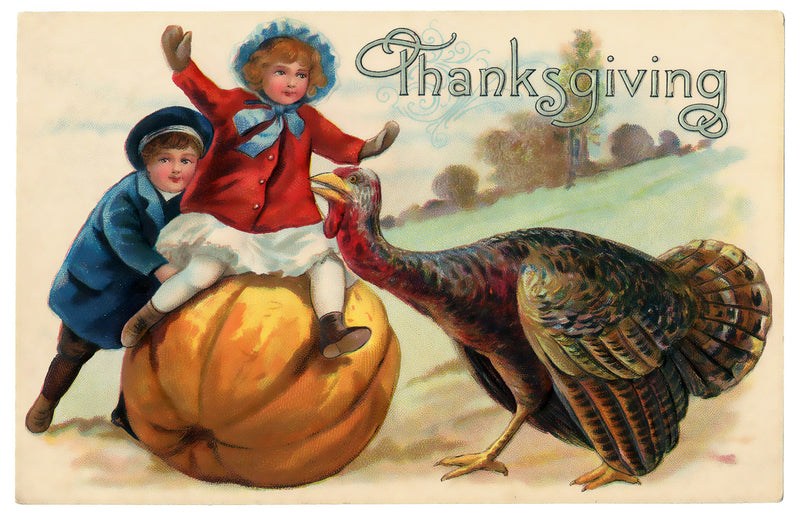
From the Mayan Temple to Your Thanksgiving Table
When you sit down at your table on Thanksgiving, with or without a turkey, did you know that reverberating in the background are thousands of years of humans honoring this bird of bounty?
Before Abraham Lincoln proclaimed the day as one of thanks, and the turkey became the guest of honor at our tables, the turkey made its journey through the fields and forests of North America. Down through time and to South America, from southern Mexico to Nicaragua, through the northern lowlands of the Yucatan Peninsula to the southern highlands of the Sierra Madre. For at least as far back as 2000BC, the turkey has been worshiped as a symbol of gratitude and community.
The Turkey in Ancient Mayan Culture
By the time the Mayan civilization was in bloom, turkeys were common. Not only were they a food source, but, even more importantly, they also held deep spiritual significance. The turkey was considered sacred and associated with the gods. One god was Yum Kaax, the god of wild vegetation and animals, who was responsible for the fertility of the land and the abundance of food.

The turkey is found everywhere in their art and worn on their bodies. The turkey’s jewel-like feathers were prized by their elite for their ceremonial headdresses. And just as it is for us today, the turkey provides an abundance of food that begs to be shared at community feasts and celebrations.
The Mayan traditions around the turkey continued in the Aztec and Toltec cultures. As native populations migrated northward, the wild turkey migrated with them, becoming more abundant and more significant as a staple food source. They became central to rituals giving thanks for harvests at communal gatherings.
The Symbol of Thanksgiving
The first official day of Thanksgiving was declared by George Washington, to be celebrated on Thursday, November 26th in 1879. This was the year he was first elected president, the first congress met, and the Constitution was ratified. There was a lot to be thankful for. By then, the turkey had established itself as the centerpiece of many a communal meal and was likely found on the table that first official Thanksgiving Day.
That Thanksgiving was a one-off. It didn’t become the national holiday until the persistent efforts of Sarah Josepha Hale, an editor of the most popular women’s magazine of that day. Sarah, also the author of Mary Had a Little Lamb, used the magazine to promote many causes. She advocated for advanced education for women as well as job opportunities in fields like medicine. And, as tensions rose in the lead-up to the Civil War, she advocated for a National Day of Thanksgiving, as a way to unify the country as we moved toward the war. Thanksgiving recipes were offered in the magazine for the staples we see on tables today—turkey, stuffing, and pumpkin pies.
In 1863, President Abraham Lincoln, looking to bring the country together with a shared celebration, proclaimed Thanksgiving a national holiday. The image of the plump, festive bird was restored to its ancient place as the symbol of abundance, as the centerpiece for gatherings where we are called to share and give thanks for our blessings.
Turkey as Sacred Symbol
Whether Turkey is the center of your Thanksgiving table, it remains a symbol of gratitude, of sharing, of community. It echoes its ancient Mayan association with fertility, abundance, and sustenance.
As the world has become more commercialized, wild turkeys, in large part, have given way to farmed turkeys, bred for larger and larger breasts so that these turkeys can no longer fly. The annual celebration of Thanksgiving now spurs discussions about the ethical treatment of turkeys and the environmental impact of poultry farming, inviting a reconsideration of our relationship with this important bird.
Moreover, the turkey’s journey from the sacred to the celebratory prompts reflections on the original indigenous practices and the Mayan reverence for the turkey. These reflections serve as a reminder of the rich tapestry of history and culture that informs contemporary celebrations.
If it is eaten at your table, let it be as a sacred act, honoring the cyclical nature of life on earth, and the sacrifice the turkey makes in a bond between the eaten and the eater. Recall turkey’s ancient status as companion to the gods.
Call upon the turkey whenever you need to consider the nature of giving and receiving, of sacrifice, and the ways that you have benefited from the sacrifices of others.

To view our Turkey Collection, click here.

